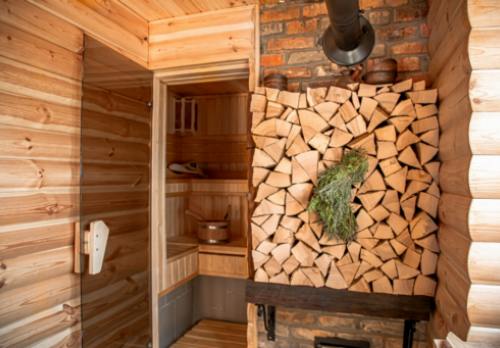Safety Features and Certifications
22 March 2025 by Kyle A.When it comes to enjoying the relaxation and health benefits of a wood-burning sauna in your home or garden, safety should always be a top priority. Understanding the various safety features and certifications that are associated with wood-burning sauna heaters and construction is crucial for ensuring a safe and enjoyable sauna experience. In this article, we will discuss the importance of UL certification for wood-burning sauna heaters, key safety features to look for in wood-burning saunas, and the ANSI standards that govern wood-burning sauna construction.

Understanding UL Certification for Wood-Burning Sauna Heaters
One way to ensure that a sauna heater meets safety standards is by looking for UL certification. UL stands for Underwriters Laboratories, an independent organization that tests products for safety and certifies them accordingly. In order to receive UL certification, wood-burning sauna heaters must undergo rigorous testing to ensure they meet specific safety requirements. This includes testing for electrical safety, fire resistance, and performance under various conditions. By choosing a sauna heater with UL certification, consumers can have peace of mind knowing that the product has been thoroughly tested and meets strict safety standards. It is important for consumers to familiarize themselves with UL certification when purchasing a wood-burning sauna heater to ensure they are investing in a safe and reliable product. By choosing a sauna heater with UL certification, consumers can enjoy their sauna experience with confidence in the product's safety and performance.Key Safety Features to Look for in Wood-Burning Saunas
When it comes to wood-burning saunas, safety is of utmost importance. Here are key safety features to look for in wood-burning saunas:Proper Ventilation: Ensuring the sauna has proper ventilation is crucial to prevent the buildup of harmful gases like carbon monoxide. Look for saunas that have well-designed ventilation systems to maintain air quality.
Heat Shields: Wood-burning saunas can reach high temperatures, so it's important to have heat shields in place to prevent accidental burns or fires. Heat shields should be installed near the heater and any other hot surfaces.
Fire Safety Measures: Look for saunas that have fire safety features such as fire-resistant materials and proper clearance distances from combustible materials. It's also important to have a fire extinguisher nearby in case of emergencies.
Safety Certifications: Make sure the wood-burning sauna has been tested and certified by reputable organizations such as UL (Underwriters Laboratories) to ensure it meets safety standards. Certification indicates that the sauna has been thoroughly tested for safety and performance.
Clear Operating Instructions: It's important that the sauna comes with clear operating instructions for safe use. Make sure you understand how to properly operate and maintain the sauna to prevent accidents or injuries. By paying attention to these key safety features, you can enjoy the benefits of a wood-burning sauna while ensuring the safety of yourself and others.